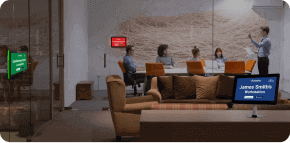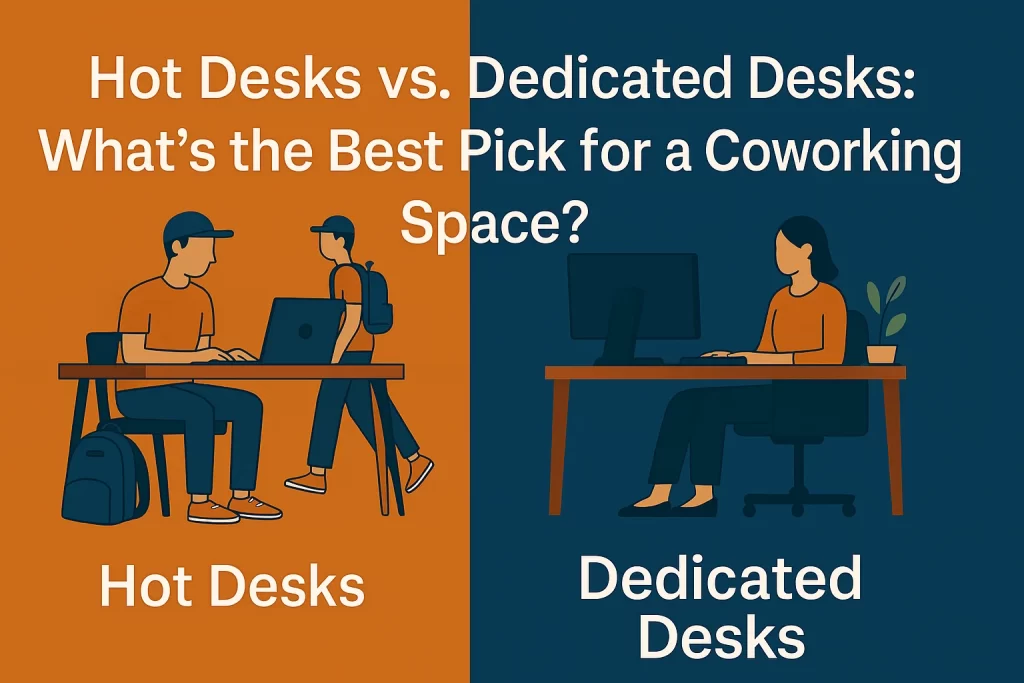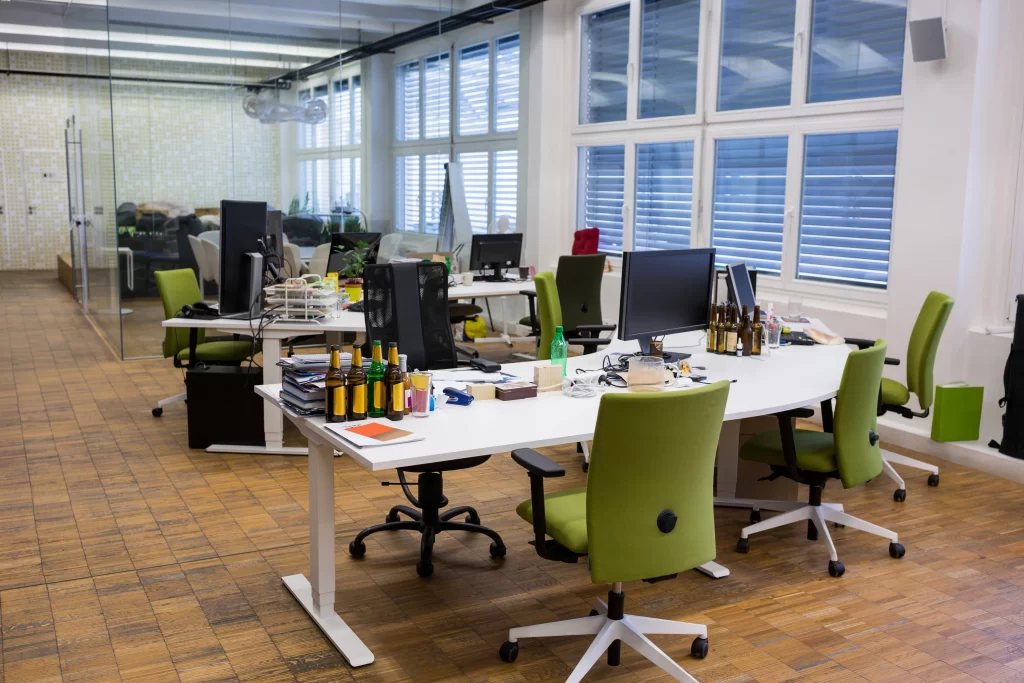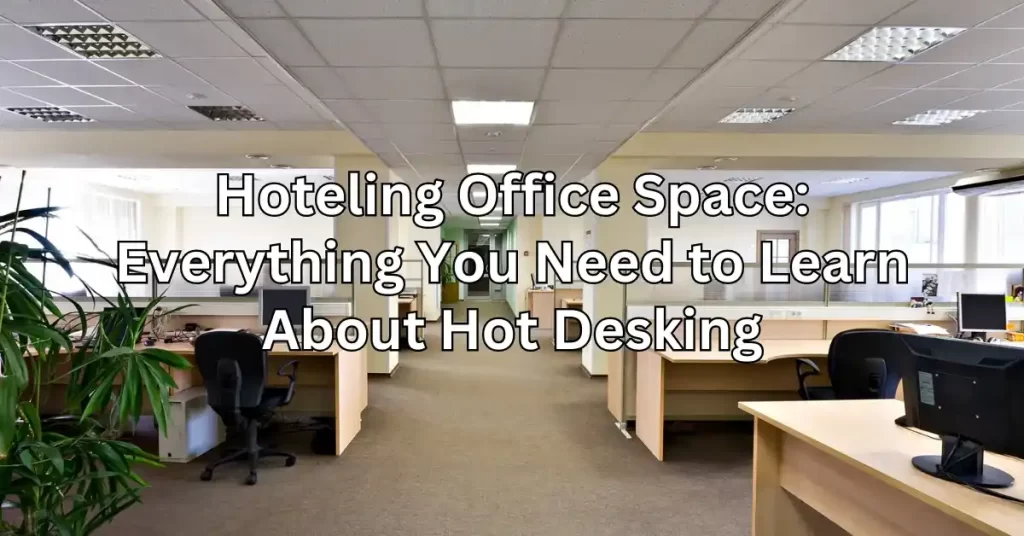Blog

The Need for Streamlined Top-Quality hot desk office Space
Successful workplace management is essential in today’s competitive business climate so that companies can meet the needs of their employees. For companies to achieve their goals of maximizing production and employee morale, top-notch space-management efficiency is essential. A well-organized system that facilitates rapid decision-making about utilizing existing space is critical. You need to implement modern tools and methods so that office spaces can be reserved, found and managed.
The Importance of Simplifying Top-Notch Office Space Management
Efficient space management allows businesses to maximize the use of their shared office space, like a huddle room or flex room, and provide employees with a more pleasant workplace. You must master the art of space management to boost productivity and ensure your employees and guests are happy and safe. A well-organized, high-quality space management system can help companies make better use of their space and create a more pleasant workplace for employees.
Streamlined, high-quality space management is crucial in the workplace for a variety of reasons:
Reason No. 1: You Acquire Happier Employees and Guests
Employee and guest happiness, productivity, and morale can all benefit from a clean, well-organized workplace. Employees are more likely to maintain their enthusiasm and dedication to the job if they enjoy coming to work each day. The debate over whether to use cubicles or open offices is only one of many ways a space management approach, including calculating room capacity, can benefit workplace design, layout, and efficiency. Strategic space management is essential from a psychological and organizational standpoint.
Reason No. 2: It Guarantees Greater Work Efficiency
Effective space management helps eliminate distractions and improves workplace organization. Employee productivity increases when they have the appropriate tools and a comfortable environment to use them. Individually motivated employees are more likely to achieve their full potential. They can enter a flow state and perform their activities more effectively when you have hot desk office space.
Reason No. 3: It Can Adapt Seamlessly
Businesses may respond more rapidly to shifting demands and conditions with an efficient space management presentation system. They can better respond to technological innovations and shifts in the marketplace by maintaining the flexibility to reorganize their physical workspaces and the resources within them.
Reason No. 4: Companies Provide a Sense of Security
A well-organized office area can reduce dangers like tripping hazards and fire exits obstructed by clutter. Employees may do their jobs without worrying about safety if their workspaces are neat.
Reason No. 5: You Cut Costs While Earning More ROI
You are saving money by not having any unused space. Businesses can reduce their company’s real estate, renting, and energy expenditures with innovative space management. Businesses can save money on rent, energy, and carbon emissions by using their space better. When employees can reserve a specific workstation, companies can minimize the total square footage because not all workers will be present at once.With an effective customer feedback strategy, it becomes less of a chore to keep tabs on the office’s finances and productivity.
Reason No. 6: It Simplifies Your Job Life
It’s crucial to be able to access whatever you need, whenever you want, quickly. Straightforward software with a 3D floor map of your offices for a visual directory, like what DeskFlex can offer, makes navigation easy and quick. Refrain from assuming that your employees know how to go around the office.
Tools like printers, power outlets, and photography equipment must be readily available to everyone. Set up should take into account peak traffic times and locations.
Reason No. 7: It Enables You to Use an Agile Approach
When things shift, you need to adjust swiftly. You can immediately see and accommodate organizational expansion for collaborative workspaces or decline and other unforeseen fluctuations through careful space management.
Guide On How To Implement A Desk Booking Software
Businesses can make better use of their office space due to its ability to prevent unnecessary crowding and encourage using appropriate workspaces for individual functions. For optimal space management and the development of collaborative work areas in hot desk environments, the use of desk booking software is the optimal solution. A modern desk booking system allows employees to choose where they do their job and when by reserving desks and other resources in advance.
Consider some factors before releasing your desk reservation system. As a rule of thumb, consider the following guides:
Guide 1. Determine Specific Needs
It would be best first to determine the needs of the desk booking software before you can begin creating it. Consider factors like the number of users, the number of desks you wish to oversee, and the reports you require while making this determination. Ensure your software has all the tools and capabilities your company needs for complete and practical integration.
Guide 2: Select a Platform for Development
Once you have established your requirements, choose an appropriate development platform. Several software providers are available in the market, and selecting the perfect one for you might be challenging. Hence, identifying what you need is essential before choosing a software provider.
Guide 3. Either Create or Get the Software
There are benefits and drawbacks to both creating and purchasing company software. You may have to start from scratch with the software development depending on the platform you select, or you may be able to use a combination of pre-built components and custom code. Features like desk availability, booking administration, user management, reporting, and notifications all be valuable additions. The primary benefits and drawbacks of each strategy are as follows:
Creating your software:
Pros:
- Customizable: Creating software in-house provides a more customized experience, meeting the unique requirements of any given company.
- Controlled: The company has a complete say over the software development process and may make any necessary adjustments as they go along.
- Cost-efficient: Creating software in-house can save money over time compared to buying an already-made solution.
- Authentic: The company will always control the IP in the program and have the option to profit from it.
Cons:
- Time-intensive: If a company has the proper knowledge, developing software can be a lengthy process.
- Expense: Initial development costs might be high, especially if more employees or outside experts are required.
- Upkeep: Regular upkeep and updates can be time-consuming and costly after the program has been created.
Purchasing or paying for software:
Pros:
- Convenience: Buying ready-made software might be a quick and easy solution that only calls for unique skills or understanding on the company’s part.
- Time-efficient: Buying software rather than building it from scratch might be a time saver for businesses.
- Technical Support: When purchasing pre-built software, it is common to receive access to customer service and technical assistance.
Cons:
- Limited: Pre-made software may only partially adapt to an organization’s unique requirements.
- Licensing Costs: Software licensing fees are an expected expenditure for buying software and can build up quickly.
- Dependent: Risk of relying on the software provider for help and upgrades to the system.
Factors including business needs, funding, and skill influence the decision of whether to develop or buy software. Before choosing a choice, a company should thoughtfully consider how it will help achieve its unique objectives.
Guide 4. Run the Software’s Tests
You must perform extensive testing before releasing the software to ensure it behaves as planned. As part of this process, we will test the software thoroughly to ensure it is reliable and straightforward. In this section, you, your employees, and your visitors will better understand the software’s functionality and the extent to which it is user-friendly, particularly for people with less technical expertise.
Guide 5. Release the Application
After ensuring the software is bug-free during testing, you can roll it out. Installing and installing the software and providing user training are all part of this process.
Guide 6. Maintain Consistent Support Tech
You’ll need to offer maintenance and support services even after the software is up and running to keep it that way. It could involve troubleshooting, product development, or user support.
The Bottom Line
As workplaces transform and technology advances, these tools have emerged as critical components of any effective space management plan. With the correct desk booking system, businesses can manage intricate workplaces while giving employees a range of work options that boost efficiency, encourage teamwork, and cut unnecessary expenses. Select a service provider with a track record of regular upgrades and maintenance to guarantee your system’s continued safety and viability. You may rest assured that your company’s use of the desk booking software is secure if you take these precautions.















































 Support
Support  Demo
Demo  Blog
Blog 







